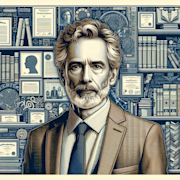The Supernatural in Henry James' The Turn of the Screw

Henry James’ classic novella, The Turn of the Screw, is a chilling and ambiguous tale that has captivated readers for over a century. One of the key elements that makes this story so intriguing is the presence of the supernatural. In this blog post, we will explore how James uses the supernatural to create tension and uncertainty in his narrative.
The Haunting of Bly Manor
The central plot of The Turn of the Screw revolves around a governess who is hired to care for two orphaned children, Miles and Flora, at a remote country estate called Bly Manor. As the governess settles into her new role, she begins to experience strange occurrences that suggest the presence of ghostly spirits. The apparitions of two former employees, Peter Quint and Miss Jessel, who died under mysterious circumstances, haunt the governess and the children.
James masterfully builds a sense of foreboding and unease by leaving the nature of these apparitions ambiguous. Are they malevolent spirits seeking to harm the children, or are they figments of the governess’s imagination? This ambiguity creates a sense of psychological horror that lingers long after the final page is turned.
The Governess’s Unreliable Narration
One of the most intriguing aspects of The Turn of the Screw is the governess’s unreliable narration. As the story unfolds, it becomes clear that the governess is an unreliable narrator, prone to flights of fancy and delusions. Her obsession with protecting the children from the supposed spirits at Bly Manor leads her to interpret innocent events as evidence of supernatural intervention.
James cleverly blurs the line between reality and imagination, leaving readers to question the veracity of the governess’s account. Is she truly encountering ghosts, or is she descending into madness? This uncertainty adds another layer of complexity to the story and makes the supernatural elements even more haunting.
The Ambiguity of Evil
Central to the ambiguity of The Turn of the Screw is the question of evil. Are the ghosts at Bly Manor truly evil entities intent on corrupting the children, or are they manifestations of the governess’s own repressed desires and fears? James leaves this question unanswered, forcing readers to confront their own beliefs about the nature of good and evil.
By refusing to provide a clear resolution, James invites readers to grapple with the complexities of human nature and the capacity for good and evil within us all. This ambiguity lends the story a timeless quality and ensures that The Turn of the Screw remains a source of fascination and debate among readers and scholars alike.
Conclusion
In The Turn of the Screw, Henry James masterfully uses the supernatural to create a sense of mystery and unease that lingers long after the final page is turned. By leaving the nature of the ghosts ambiguous and making the governess an unreliable narrator, James creates a psychological horror story that continues to captivate readers to this day. The novella’s exploration of the ambiguity of evil and the complexities of human nature ensures that it remains a classic of the supernatural genre. Whether you believe in ghosts or not, The Turn of the Screw is sure to send a shiver down your spine.

Johnathan Evans
Journalist
More From Classics Authority Books

Book
Analyzing the Social Commentary in Upton Sinclairs The Jungle

Book
Harry Potter and the Prisoner of Azkaban by J.K. Rowling

Book
Dombey And Son by Charles Dickens

Book
Paper Towns by John Green

Book
A Painted House by John Grisham

Book
The Mysterious Moor: Wuthering Heights' Brontëan Landscape





